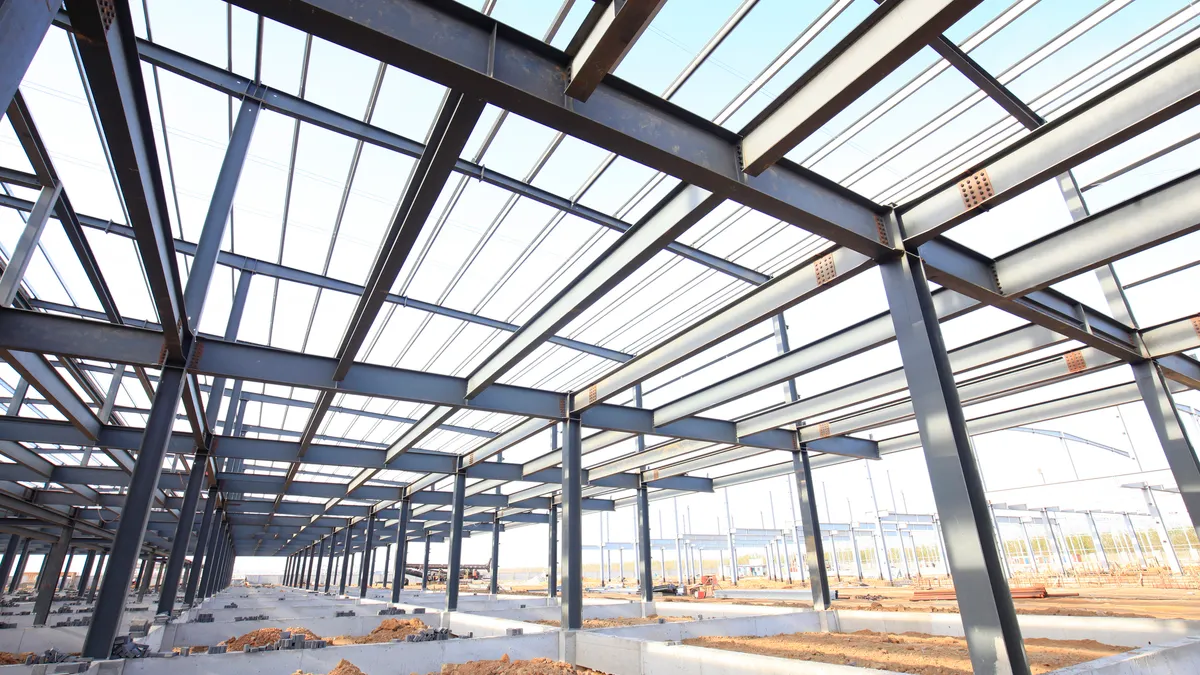The once red-hot industrial sector is beginning to show signs of a cool-off in the construction industry.
Kyle Roberts, executive managing director at Newmark, points to the credit crunch’s impact on the development community. While certain markets should remain strong, Roberts expects to see substantially less product delivered starting midway through 2024 due to tightened credit conditions.
New construction starts in the sector dropped 38% year-over-year, while demand for industrial space tumbled by 40% in the first quarter of 2023, according to the latest industrial research from Newmark, a New York City-based commercial real estate advisory firm.
Additionally, as the supply and demand gap widens in the next few quarters, record debt maturities are reaching their due dates on both the ownership and occupier side, according to Newmark. About 12% of the leveraged debt due before 2024 is in the industrial sector, with an additional 11% maturing in 2025, according to the report.
That would further slow activity in the industrial construction sector.
Here, Roberts speaks with Construction Dive about industrial construction projects, debt maturities in the sector and what firms specializing in industrial work should do in the face of a slowdown.
Editor’s note: This interview has been edited for clarity and brevity
CONSTRUCTION DIVE: Is momentum in the industrial construction industry beginning to slow? What is the sentiment in that sector?
KYLE ROBERTS: The industrial sector is cooling in some markets, while remaining red-hot in others. Markets with total occupancy cost dynamics which make them attractive consolidation environments remain in high demand. Demand is accelerating for specialized uses like data centers, cold-chain and manufacturing facilities universally. The others are experiencing some decline.

These in-demand markets with an attractive combination of transportation and labor cost basis, relatively lower rents, lower utility costs, population growth and a business-friendly regulatory environment are still boiling with activity, and are maintaining rent growth, assuming there is not an accompanying amount of oversupply. These markets are particularly attractive if they are within a two-day reach of population mass.
So why is demand falling for industrial in certain markets?
Consumers are being priced out of consumption, and therefore have much less disposable income to deploy. Many have burned through savings, and there is recognition that both credit conditions and the intentional pressure being put on employment by the Fed will further reduce the pool of earners with the disposable income needed to consume.
Demand in industrial and logistics real estate is a function of end-user consumption of physical goods, so as the capacity and willingness of consumers to consume declines, there is an attendant reduction in the amount of carried inventories. That decline then carries over to the production and manufacturing of said inventories. This dynamic impacts the demand for space and drives supply chain network optimization, the latter of which is actually a demand driver for markets with a strong value case, but posits that what will be one market’s gain may be multiple markets’ loss.
The report mentions a record amount of debt maturities are coming due on both the ownership and occupier side. How will that affect construction activity?
The primary concern would be that if there is a wholesale value reset, then cost basis in real estate effectively declines. Generally, we do not see construction starts for speculative development if market trades are occurring significantly below the cost basis of new construction. Commodities and labor across all construction types impact total construction costs.
We would expect that, as with any macro-cyclical change where there are general recessionary pressures, prices would decline in concert with demand.
When Amazon announced they were stopping industrial developments in 2022, the market reasonably dipped too. The report mentions to expect "less product delivered starting mid 2024," is that deceleration even greater than when Amazon pulled back?
Amazon’s response was a function of a dip in consumer demand, and, as is the case for many omnichannel distribution users, recognition of that started to occur at the end of the first quarter last year.
A combination of remaining consumer credit availability amid a tightening consumer credit market, lower inflation adjusted disposable incomes, depleted consumer savings and clear statements from the Federal Reserve that it needs employment to cool before easing its foot off the gas pedal, all point toward a reduction in goods consumption. These factors are what underpins the expectation outlined in the report.
What can construction firms do to weather this fall in demand for industrial projects?
Construction firms can look for segments of the market that are emergent and will become more important in tandem with supply chain shifts. Sectors of the market that have “cross-over demand” with traditional industrial products, such as data centers, cold-chain and manufacturing facilities, remain strong in demand, especially in some key regions.




















